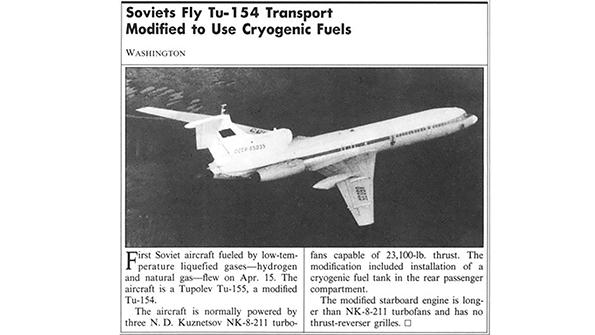
Ask the Editors: The Aviation Week Network invites our readers to submit questions to our editors and analysts. We’ll answer them, and if we can’t we’ll reach out to our wide network of experts for advice.
How does anyone expect to get around the problem of fuel storage space in aircraft with the switch to hydrogen power?
Aviation Week Senior Propulsion Editor Guy Norris responds:
Hydrogen propulsion holds significant potential to reduce climate impact in flight by as much as 75% when used in engines for direct combustion and as much as 90% when used in fuel cells to power electrically driven hybrid engines or distributed propulsion systems. Although liquid hydrogen (LH2) has three times the gravimetric energy density of jet fuel, it has a low volumetric density (approximately 2.4 kWh/liter compared with 10.4 kWh/liter for kerosene). This creates a huge challenge for aircraft designers because hydrogen fuel will require about four times the volume of jet fuel to carry the same onboard energy.
Even assuming lightweight tanks can be developed, the volumetric density issue means hydrogen propulsion will—at least for the near to mid-term—be best suited to smaller regional, short- and medium-range aircraft. Although hydrogen fuel is technically feasible for use in longer-range aircraft, the size of the fuel tanks would result in much longer or larger fuselages and greater energy demand, resulting in costs as much as 50% higher per passenger. For the longer term, however, it is possible that new volumetrically efficient airframe designs, such as blended wing body (BWB) configurations, would enable hydrogen to be considered for future long-range applications.
According to a recently published independent review of hydrogen-powered aviation prepared by McKinsey & Co. for the European Union’s Clean Sky 2 research initiative, developers are considering multiple options to enable fast-tracking service entry of hydrogen-powered aircraft so they could have a material impact on the climate before 2050. The initial evolutionary option is to develop versions of current tube-and-wing designs in which engines and fuel systems are adapted to run on LH2.
For an Airbus A320/Boeing 737-size aircraft flying on typical ranges up to 1,100 nm (2,000 km), for example, the issue of fuel volume would be handled by stretching the fuselage to accommodate LH2 tanks behind the passenger cabin. Power would be provided by a hybrid system that combines hydrogen-burning turbine engines sized for takeoff and climb with an 11-megawatt fuel cell to generate the bulk of power for cruise.
Compared with current aircraft, overall range would be about 25% shorter, and design speed would be reduced to about Mach 0.75, but carbon dioxide emissions would be zero while overall climate impact would be 70-80% less. Although cost per available seat-kilometer would be more than 20% greater, this would be partially offset by better energy efficiency.
Revolutionary options, while still including the addition of LH2 tanks in the main fuselage, center on the development of fuel cells for commuter and regional aircraft. These would power a distributed propulsion system made up of electrically driven propulsors. However, this option would not meet the energy demands of medium- and long-range aircraft. Until BWB and other alternative configurations become available, the most realistic solutions will continue to be evolutions of existing airframes. In these, large turbofan engines would be adapted to burn LH2, and extra fuel tanks would be contained in extended fuselages.
The bottom line is that carrying an A320 or 737-800 passenger load in an A321- or 737-10-size fuselage may be economically and technically feasible, but the scaling effects make this increasingly challenging with larger airliners such as the A350 or 787. Fuel tank technology, therefore, is a critical pacing factor governing the speed and extent to which hydrogen power will be adopted. The McKinsey report indicates a 50% reduction will be necessary in overall LH2 tank mass compared with current prototypes. Measured in terms of a gravimetric index (the weight of LH2 fuel mass in relation to full weight of tank filled with maximum LH2 load), a successful evolutionary short-range airliner will require an index of 35% while long range aircraft will require 38%. Only improvements of this scale, the report argues, will allow weight and volume to be reduced to the point at which these concepts become operationally practical.






Comments